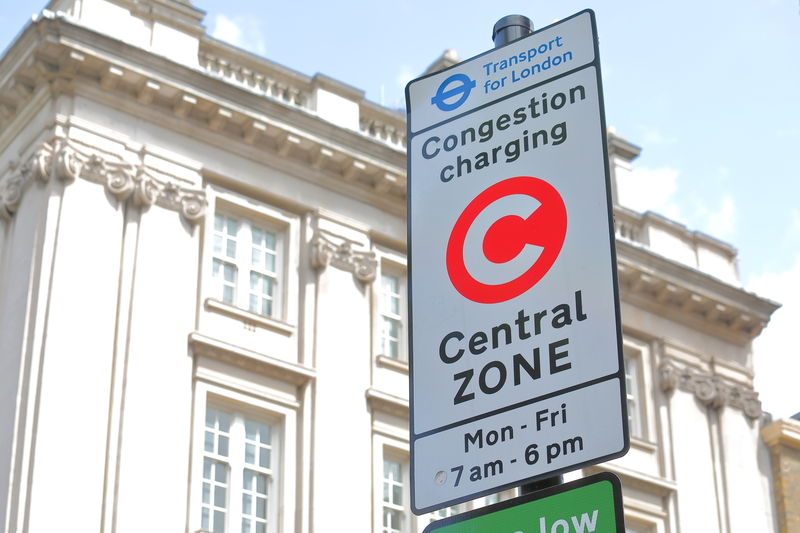
A simple solution that can cut traffic and air pollution and get folks to work faster seems like an idea everyone should be able to agree upon. But the topic of congestion pricing can quickly turn into a heated debate.
Ironically, both the hospitality industry and the utilities sector make use of this principle, but most don’t take a stance against it the way they do with transportation.
Congestion pricing involves charging drivers a fee to enter high-traffic areas during peak times. This economic incentive encourages drivers to change their travel behaviour by opting for public transportation, carpooling or travelling during off-peak hours. This, in turn, serves to reduce traffic volume during the busiest times, as well as air pollution. It also ensures that road space is used more efficiently and equitably.
“Had New York moved forward, it would have opened up some breathing room for Los Angeles and San Francisco to take their fairly dormant proposals and revive them”
The benefits of implementing a congestion are fairly obvious:
• Reduced traffic volumes Major cities like New York, Los Angeles and San Francisco currently face severe traffic congestion that hampers economic productivity and quality of life. Congestion pricing can significantly reduce traffic volumes during peak periods, leading to smoother traffic flow, reduced travel times and improved reliability of road networks.
• Environmental sustainability By decreasing the number of cars on the road and encouraging the use of cleaner transportation alternatives, congestion pricing contributes to reduced vehicle emissions. This is particularly important for cities struggling with air quality issues which are aiming to meet environmental sustainability goals.
• Revenue generation for public transportation The funds collected from congestion pricing can be reinvested into a city's public transportation infrastructure. This creates a positive feedback loop: better public transportation options encourage more people to leave their cars at home, further reducing congestion and pollution.
• Equitable use of road space By discouraging discretionary trips during peak times, congestion pricing ensures road space is available for those who need it most, such as emergency vehicles, public transportation and essential services.

While the benefits of congestion pricing are clear, its implementation also presents a number of challenges which city officials need to address, among them:
• Equity and accessibility Ensuring that congestion pricing does not disproportionately impact low-income drivers is crucial. Measures such as exemptions or discounts for low-income residents, improved public transportation options, and targeted investments in underserved areas can help address equity concerns.
• Public and political acceptance Successful implementation requires strong political will and public buy-in. Transparent communication about the benefits, planned reinvestments and potential exemptions or mitigations is essential. Pilot programmes and phased implementation can also be instrumental in building support.
• Technological infrastructure Implementing congestion pricing requires robust technological systems for monitoring, billing and enforcement. Investments in reliable, user-friendly technology are essential to ensure smooth operation and compliance.
NYC’s congestion pricing programme
Congestion pricing policies have proven to be extremely successful in relieving traffic in cities around the world and hold significant potential for major urban areas in the US grappling with chronic traffic issues – all of which makes New York Governor Kathy Hochul’s recent decision to scuttle a congestion pricing plan for Manhattan at the last minute all the more confounding.
Decades of discourse preceded the Big Apple’s decision to move forward with its plan. While transportation officials in New York have been advocating for similar measures going back to the 1970s, it was former mayor Michael Bloomberg who launched a serious push to impose a user fee on vehicles entering Manhattan’s busiest streets in 2007.
The current plan, which would have had commuters who drive to work paying up to $15 daily to enter lower Manhattan starting June 2024, would have raised approximately $1 billion per year to help the city’s struggling transit system. But in a stunning, eleventh-hour decision, Hochul ordered the first congestion pricing programme in the US to be put on hold indefinitely, after years of staunchly supporting it.
The New York Times Editorial Board called her decision a “grievous misjudgment”. With 64% of people in New York opposed to the programme and 72% of suburban folks against it, according to a Siena College survey, it seems the decision was made in part because of politics. Another possible reason for the governor's decision was the financial impact on lower-income individuals who need to drive into lower Manhattan daily.
“While the benefits of congestion pricing are clear, its implementation also presents a number of challenges which city officials need to address”
The plan, which would have imposed a fee on vehicles entering the most congested parts of the city, was expected to encourage more commuters to use public transit, thus alleviating traffic and improving air quality. However, Hochul was concerned that the additional costs would disproportionately affect low-income workers who rely on their cars for commuting “at a time when inflation is still cutting into New Yorkers’ hard-earned wages”. In a message announcing her decision, she worried that “one more added cost would make residents rethink living or working here altogether, hurting our recovery even more”.
Rather than scrapping a project with substantial environmental and congestion benefits, some argue that the state could have explored alternative measures, such as reducing taxes, to mitigate the financial impact on lower-income drivers.
The cancellation of the congestion pricing plan raises questions about equity and the distribution of benefits and burdens across different communities. While the plan was primarily focused on Manhattan, its impacts would have extended to residents of the outer boroughs and beyond. The decision highlights the complex interplay between environmental goals, economic considerations and social equity in urban policy-making.
Within the US, all eyes have been on Manhattan’s congestion pricing programme. Had New York moved forward, it would have opened up some breathing room for Los Angeles and San Francisco to take their fairly dormant proposals and revive them. Likely, these other cities will now be very cautious moving forward with similar schemes, if at all.

Congestion pricing examples
While the US does not seem ready for this type of programme, congestion pricing has cut traffic in several other major cities around the world.
One of the pioneers of congestion pricing, Singapore implemented its Area Licensing Scheme in 1975, which evolved into the current Electronic Road Pricing (ERP) system. This dynamic pricing model adjusts charges based on real-time traffic conditions, leading to consistently smooth traffic flow and high compliance rates. The revenue supports the city's extensive public transportation network, making it one of the most efficient in the world.
Congestion pricing has been in place in London since 2003. Today, London has seen a 30% reduction in traffic congestion within the central zone and generated approximately £2.6 billion by 2018. That money has been reinvested in improving public transportation, cycling infrastructure and road maintenance. And by and large, the people there have adapted to it.
Congestion pricing was unpopular in Stockholm when first implemented, so officials kicked off a six-month trial programme in January 2006, with a permanent relaunch in 2007. “The closer you get to implementation, the more the drawbacks stand out," Stockholm transportation director Jonas Eliasson noted in a Streetsblog NYC article. "If you survive this valley of political death, and people actually see the benefits, and also realise that, in addition to the benefits, it’s actually not as bad as you thought....then support starts going up again."
After the pilot, the Swedish government released a referendum. Stockholm residents voted in favour—the first time any European residents elected to adopt a road charging system. In the years since, support has grown to over 70%.
These and other success stories provide compelling evidence that congestion pricing can be a highly effective approach to managing urban traffic congestion in diverse urban contexts, with significant benefits for environmental sustainability, economic productivity and quality of life.
None of this is easy and there are pitfalls that must be addressed if congestion pricing is to have any chance of success. But the examples of several cities around the world in implementing it offer valuable lessons and evidence of the effectiveness of this policy.
For major US cities struggling with chronic traffic problems, congestion pricing offers a viable path forward. By carefully designing and implementing such policies, US cities can create more efficient, liveable and sustainable urban environments. As a seasoned traffic and transportation planner, I strongly advocate for the adoption of congestion pricing as a critical component of modern urban mobility strategies. The time to act is now, harnessing the lessons from global pioneers to create a better future for our cities.
ABOUT THE AUTHOR

Wes Guckert is president and CEO of The Traffic Group. He is also a fellow of ITE and on the National Small Business Leadership Council. For more information, visit www.trafficgroup.com or email [email protected]











